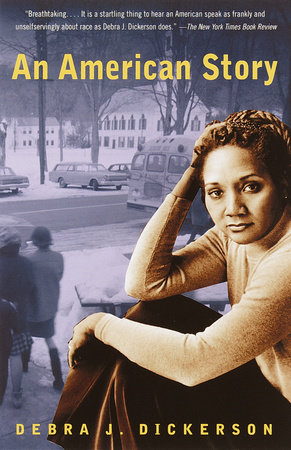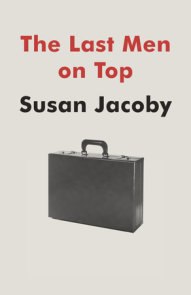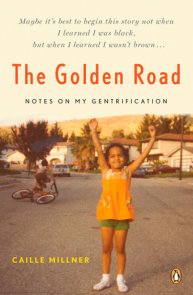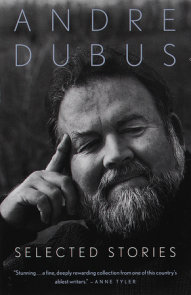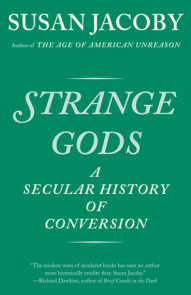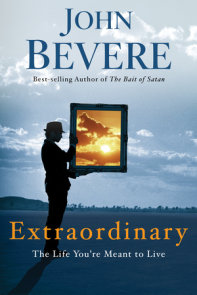READERS GUIDE
The questions, discussion topics, author biography, and suggested reading list that follow are intended to enhance your group’s reading of An American Story by Debra J. Dickerson. Dickerson’s frank, thought provoking, and ultimately triumphant memoir traces her spirited rise from the poor, black, working class of St. Louis in the 1960s to the ranks of the educated, middle-class, professional elite. Along her inspiring personal journey, she tackles head-on some of the most controversial American issues of the day–class, race identity and relations, feminism, and politics–ultimately pioneering a new place for herself that successfully merges her past with her present.Introduction
The daughter of sharecroppers who migrated north during the Great Migration of blacks in the first half of the twentieth century, Dickerson grew up in a strict Southern Baptist family. Her father was a former Marine who lived by his hatred of the "white man." He ran his household like the military–his strict treatment of his children becoming progressively more abusive over time. By the time Dickerson was twelve, the situation was so severe that her mother took all six children to a house across town to escape their father. Throughout these years, Dickerson read voraciously, seeking solace and companionship in literature.Dickerson emerged as a teenager into a society that was urban, black, and poor. With no examples, no privilege, no money–she did not even know what the PSAT was or realize that black people could write books–it was solely through her fierce determination and love of learning that she succeeded in obtaining an education and remaining out of trouble. Dickerson shunned her own poor, black, working-class peers. With no sense of direction or future, Dickerson enlisted in the U.S. Air Force, excelling for twelve years, six of which she served as an officer. After earning two degrees, Dickerson left the Air Force, attended and graduated from Harvard Law School, and found her calling as a journalist. Her rocky road to success was fraught with the complications of class, race, and gender relations, politics and careerism. In an effort to navigate and succeed, Dickerson had to remake herself repeatedly, until, as she puts it, she went "from Debbie to Debra, from self-hating to sane, from mental ghetto to mental freedom" [p. xvii]. From her more mature, successful vantage point, Dickerson is finally able not only to accept, but even to embrace her black, working-class heritage and her current identity as an educated, self-made black woman.
An American Story presents an opportunity to analyze the complicated political and emotional issues of race, gender, poverty, and class struggles that permeate contemporary American society, and Dickerson’s personal story and unique experiences offer a valuable perspective.
Questions and Topics for Discussion
1. Dickerson’s attitude towards her own race is complex and fluctuates from disgust to celebration at different periods in her life. She attributes her confusion to self-hatred, which she thinks is a common affliction among oppressed blacks. Viewing the black people in her social milieu, she writes, "I began to believe that poor people bring most of their problems on themselves. I understood that oppression was a real force in our lives, but surely the answer was not willy-nilly procreation, drug use, sloppy work habits. The answer was to work hard, be smart. Like me" [p. 65]. In response, she alienates herself from black people and tries to act "white." However, after succeeding in rising to the middle class, as she puts it, she realizes that she "wants to be black," to identify with her own race [p. 146]. How does Dickerson finally reconcile her feelings about her race? Would Dickerson have been able to achieve what she did without the initial feelings of self-hatred and alienation? Is this the ultimate tragic irony of her story? Even after this turning point, does Dickerson resolve all of her conflicting feelings for black people? (See pp. 194, 236, 249-5)
2. Dickerson writes, "Everything I learned about being a woman I learned from my mother and I consciously pattern my life after hers" [p. 163]. What are the characteristics about her mother that Dickerson admires? In what ways is she like her mother and in what ways is she necessarily different?
3. How is the subplot of Bobby’s personal history and the evolution of Bobby and Dickerson’s relationship symbolic of Dickerson’s personal and political evolution?
4. In the second half of her memoir, Dickerson’s feelings toward her father have mellowed from hatred to a more complex bitterness mixed with love, admiration, and regret. Dickerson refers more and more frequently to her father’s influence on her, and she repeatedly identifies with him, such as when she refuses to ask for help [p. 97], when she is determined to attain her goal in spite of adversity of the world [p. 171], and when she breaks away from her activist companions in law school [p. 262]. And, like her father, Dickerson often feels she must battle an anonymous enemy. (See pp. 243, 275.) For Dickerson, is this an internal or external enemy? Does it change over the course of her life? Is she her own worst enemy? How has Dickerson become like her father?
5. What does it mean to be a "feminist" for Dickerson? She writes, "Very early on, I realized that being female in the military was going to be much more difficult than being black" [p. 106]. Why was this the case? Is this statement applicable to the other situations in Dickerson’s life–family, school, work, and politics? How is Dickerson affected by being black versus being female at different times in her life?
6. Dickerson struggles to reconcile her working-class identity with her newfound place in the educated, middle-class "elite." Is she successful? What does her experience with the nonprofessional staff at the San Francisco office of her law firm teach her about her ability to live simultaneously in the world of her childhood and her adulthood [pp. 269-271]? Is Dickerson justified in being angry at her white male classmate for labeling her "elite" [p. 275]?
7. At one point, Dickerson becomes upset because she forgets what the poor look like. She writes, "I didn’t want to forget. I didn’t want to excuse, but I didn’t want to forget and, most of all, I didn’t want to become them. . . . I hadn’t understood then that you can never stop being who you were born being; you can add things but you can never subtract from the baseline"[pp. 275, 276]. Is this an accurate observation about the evolution of personal identity?
8. Is Dickerson’s idea of working for the "betterment of the working class" [p. 190] by creating a venue for black entrepreneurial women constructive [p. 216]? What might be her purpose in including this idea in her memoir when she apparently abandoned it?
9. Dickerson asserts that "the military is the most race-neutral place I’ve ever been because in uniform, nothing matters but success. . . . When society talks about ‘transcending race,’ it really means ‘transcending nonwhiteness.’ In the military, you really do have to transcend race, including the white one" [pp. 108, 109]. Do her experiences support these observations? What is Dickerson’s point in relaying the incident in which she confronts the officer at the Pentagon about the absence of blacks in photos of presidential escorts [p. 226]? Does this contradict her statement about the military’s race-neutrality? If the military is so race-neutral, why does Dickerson focus so closely on the racial composition of her colleagues at each new step in her military career? Is there a difference between the impact of race in the military and the role of race in one’s social experience?
10. Who does Dickerson believe her audience to be? What type of reader is she addressing? Is An American Story accessible to a wide range of readers, and, if so, what makes it so broad in its appeal?
11. Dickerson describes herself as "stiff-necked, judgmental, and unforgiving" [p. 213]. Is this consistent with the personality that emerges through her narrative? Which personality traits does she attribute to genetics and which does she attribute to her experiences and environment? In an effort to find her place in society, and in response to her personal experiences, Dickerson has "re-created" herself many times. How would you describe the "real" Debra Dickerson?
12. Dickerson describes her transition from being a rabid conservative to what her colleagues called a "bleeding-heart liberal" [p. 139]. She writes, "If a conservative is a liberal who’s been mugged, a liberal is a conservative who realizes that she can’t have what’s being conserved" [p. 140]. Why do her views change? Was the experience with the defunct Chrysler the triggering event in Dickerson’s life, or did the transition happen more gradually [pp. 140-144]? In what ways do her views on the poor and working class change?
13. At the end of her memoir, Dickerson has apparently located a middle ground for her politics: "Conservative and pessimistic at my core, I had no faith in government-based solutions, if only because governments change. Hard work, to my peasant mind, is the only thing that can be counted upon to work. Better for us to take the reins of our destiny in our own hands and alter our relationship to the status quo fundamentally rather than at the margins with welfare, sporadic job-training initiatives, affirmative action, and the like" [p. 233]. Is this a workable melding of liberal and conservative ideologies? What aspects of each has Dickerson kept and what aspects has she rejected?
14. Dickerson believes that people like her have to "fight for the masses who are unable to fight for themselves" [p. 145]. Do you agree? Why does Dickerson succeed where the "masses" fail? Was it really luck, as she claims on p. 140, that distinguished Dickerson from her compatriots in poor, black, working-class St. Louis?
15. Dickerson devotes a few paragraphs to possible solutions for the problems of poverty, race, education and workfare [p. 139]. How would different solutions have made an impact in Dickerson’s life? Bobby’s? With which solutions do you agree or disagree?
16. What is Dickerson’s definition of "racism?" Does Dickerson ever espouse "racist" views or feelings against whites? Blacks? What does the BLSA incident reveal about Dickerson’s views on racism [pp. 266-7 and 271-3]? Would Dickerson have had the same reaction when she was younger? Is affirmative action, to which Dickerson attributes her acceptance to Harvard Law School, and about which she states she "remains ambivalent" [p. 231], a racist policy?
17. In some situations, blacks are "hypervisible" to Dickerson–as in the one year language school in the Air Force [pp. 110-113], yet in other instances they are "invisible," as in the presidential escorts [p. 226]. In Dickerson’s view, which is more dangerous to the success of blacks? To her personal sense of identity and self-approval?
18. Dickerson writes of Bobby’s job as a waiter: "Certainly, he should have worked harder in high school, stayed out of trouble, equipped himself for a better job. Now he has the rest of his life to pay for decisions he made at fourteen while living in a black boy’s hell. He wasn’t a child of the middle or upper class; he had no margin of error" [p. 187]. Is class, in fact, the largest obstacle Dickerson had to overcome?
19. Dickerson concludes, "A lifetime of incidents convinced me that, though my instinct is to see myself simply as an American, I feel forced to see myself as African-American, as female" [p. 228]. And later she writes, "I had become a fully realized American" [p. 278]. What makes Dickerson’s story a truly "American" story? What makes an "American"? Is Dickerson’s journey a uniquely American one?









